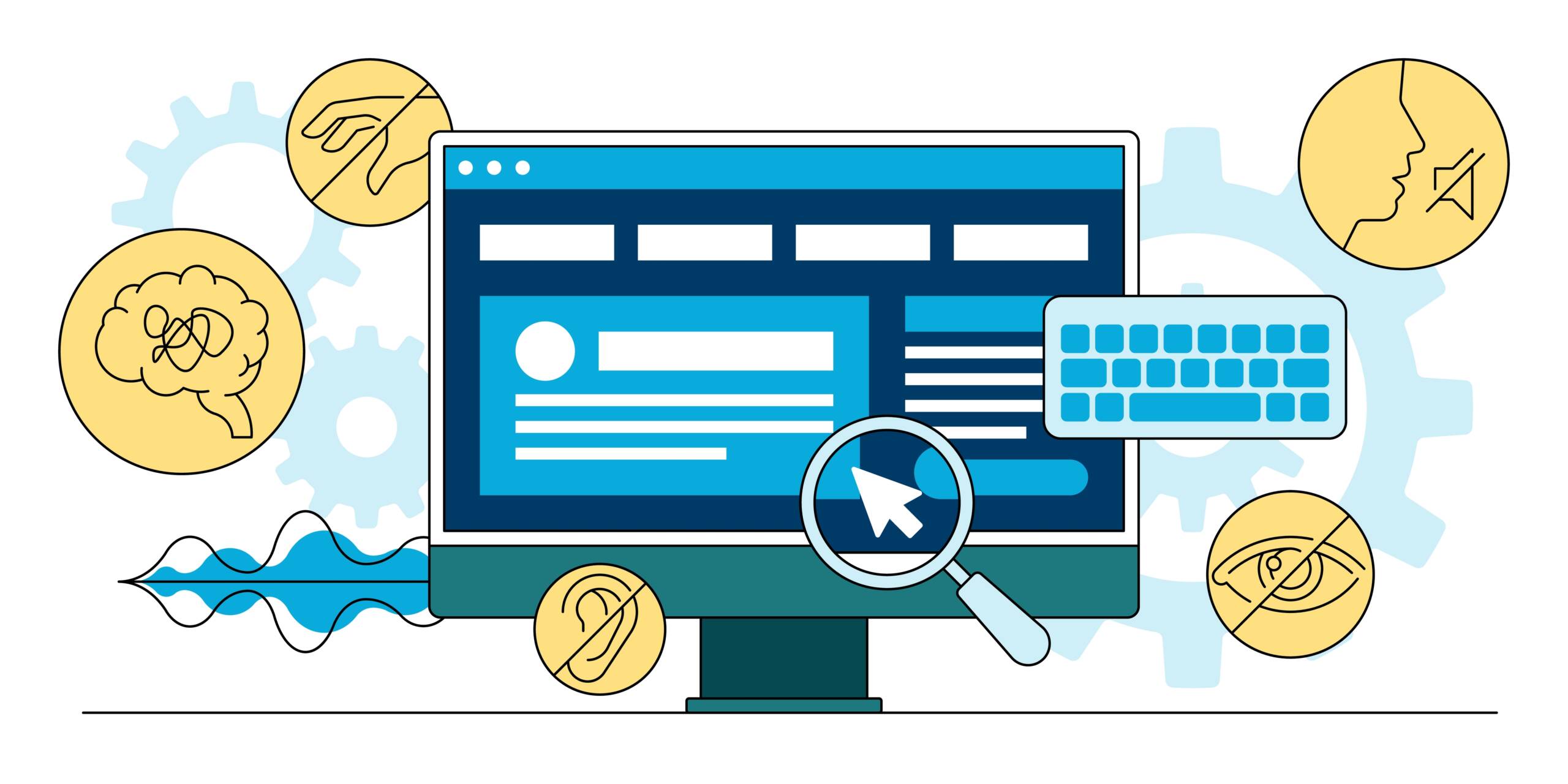Historically, UX pioneers have not emphasized designing for a diverse range of user identities which means UX design is often taught with little-to-no mention of inclusive design practices. In this article, we’ll define these terms and share why inclusive design principles are a critical component of successful UX Design.
Accessibility Design vs. Inclusive Design
Accessibility and inclusive design often get used interchangeably and while they are related, they are not the same. When talking exclusively about accessibility, it should be called accessible design. A digital product can be accessible and still alienate other product-relevant identities making the product misogynistic, racist, heteronormative, xenophobic, ageist, body shaming, skin-tone biased, etc.
What is Accessible Design?
Accessible design is the primary outcome of an effective inclusive design process. Accessible UX design minimizes barriers so that features and content can be accessed and used regardless of one’s disabilities in the following areas: hearing, motor, vision, speech, and cognition.
To help ensure adoption, accessibility guidelines are typically developed by organizations such as the World Wide Web Consortium (W3C) and the Web Accessibility Initiative (WAI) and are based on best practices and research in the field of accessibility. They include a set of standards and recommendations that help ensure that digital products and environments are accessible to users with disabilities. Since disability is only one aspect of identity, accessibility is one aspect of inclusive design.
What is Inclusive Design?
Inclusive design focuses on how to approach a design, rather than just the outcome. Inclusive design addresses accessibility, age, culture, economic situation, education, gender, geographic location, language, and race. It ensures designs not only meet business requirements but also respect the needs and expectations of the diverse range of users the digital product or applications aims to serve.
Why is Inclusive Design Important?
Creating websites and apps where users feel like they belong, rather than excluded, is critical for the success of any digital product and therefore businesses. People who use digital products come from a wide variety of backgrounds and have diverse life experiences. These experiences impact the way they interact with the world, including the way they interact with your website and app. Microsoft found that implementing inclusive design principles can lead to a 30% increase in usability for all users, not just those with disabilities.
Below are statistics that exemplify the diverse world we live in and why creating applications and digital products that acknowledge that diversity through inclusive design is so important:
- 15% of people worldwide live with some form of disability. (World Health Organization).
- More than 76% of American adults used some form of vision correction as of 2015 (Vision Council of America).
- By 2050 almost 1 in 10 people will have a hearing impairment. (Disability figure from world Bank)
- 10% of people worldwide identify on the LGBTQIA spectrum. (LGBT+ Pride 2021 Global Survey)
Steps to Designing a Digital Product that is Inclusive
- Research your target audience: Identify your target audience and research their needs, abilities, and preferences. This includes people with disabilities, older adults, non-native speakers, and others who may face barriers to using your product.
- Consult with accessibility experts: Hire and consult with accessibility experts such as disability advocates, accessibility consultants, and disability service providers to get feedback on your product’s accessibility and usability.
- Follow accessibility guidelines: Follow established accessibility guidelines such as WCAG 2.1 (Web Content Accessibility Guidelines) and Section 508 (Rehabilitation Act) to ensure that your product meets accessibility standards.
- Consider assistive technology: Consider assistive technology such as screen readers, magnifiers, and voice recognition software when designing your product. This will help ensure that your product can be used by people with disabilities.
- Test with users: Conduct usability testing with your target users, including those that have disabilities or other accessibility needs to ensure that your product is accessible and meets their needs.
- Provide accessible documentation and support: Provide accessible documentation and support such as user manuals, help files, and customer service that are accessible to everyone.
- Regularly review and update: Regularly review and update your product’s accessibility features and usability to ensure that it remains accessible and usable over time.
Why Inclusive Design is Good For Business
Practicing inclusive design provides equal access and opportunity that will not go unnoticed by consumers. In fact, 65% of consumers worldwide, say they prefer brands that promote diversity and inclusion and while mindfully avoid those companies who do not.
Today’s consumers have come to expect high-quality and seamless experiences from the products and services they use. Strong UX design brings significant benefits to business, including improved customer satisfaction, increased conversion rates, and reduced development costs.
Final Thoughts
Incorporating Inclusive Design principles in UX Design requires a commitment to understanding and meeting the needs of all users. Deploying an inclusive design process allows organizations to create digital products that are user-friendly to the widest range of people.
No matter your sector or business model, your company has a great deal to gain by deploying inclusive design principles. This is not a journey that companies can take alone. They need internal buy in and partners that offer guidance and lead by example. Catalyst UX is one of the leading firms with focused practice areas in fintech and medical/life science. We work with global leaders and emerging innovators on creating the best in class digital products and applications.
Schedule a no-cost, 30-minute web meeting
Are you grappling with designing a medical or life science digital solution? Schedule a no-cost, 30-minute web meeting to see examples of these strategies in motion and how to apply guiding principles to your own solution.

